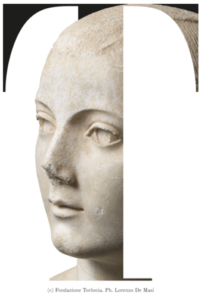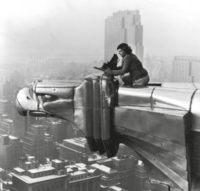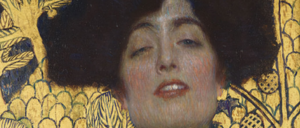Top 3 Exhibitions in Rome in November 2021
Rome’s ancient history and rich cultural heritage make it one of the world’s top art capitals. The sheer amount of museums and galleries can make it difficult to figure out, which exhibitions are worth seeing. Expats living in Rome has looked at all the exhibitions and selected three must-see exhibitions in Rome in November.
#3 The Torlonia Marbles. Collecting Masterpieces

This exhibition was supposed to end in June of this year but has been extended, due to popular demand and Covid, to January 9th of 2022.
The Torlonia collection is one of the most, if not the most prestigious private collection of ancient sculptures in the world. The exhibition, which has been moved to Villa Cafarelli (the new exhibition space in the Capitoline Museum), features 90 masterpieces, such as the Hestia Giustiani, selected from 620 catalogued sculptures belonging to the Torlonia collection.
Over 5 sections visitors will learn about the history of collecting ancient Greek and Roman marble sculptures, starting with the opening of Museo Torlonia by prince Alessandro Torlonia in 1875, when Rome became the capital of the Kingdom of Italy.
The other sections cover the excavations done by the Torlonia family on their numerous properties in Rome, such as the estates of Roma Vecchia and Caffarella, and the collections acquired from other collectors and artists in the 15th, 16th, 17th, and 18th century.
A must see exhibition before the end of this year.
Entry Fee: 13€ (full price), 11€ (concession), free for children below the age of 6
Website: http://torloniamarbles.it/
 #2 Prima, donna. Margaret Bourke-White
#2 Prima, donna. Margaret Bourke-White
The Museo di Roma Trastevere is exhibiting over 100 photographs on the life and unconventional vision of Margaret Bourke White, a pioneering American photojournalist, who was known to her fellow LIFE Magazine staff as “Maggie the indestructible”.
The first known female war correspondent, Bourke-White covered social issues such as the victims of the Dust Bowl in the mid-1930s and was the first Western photographer allowed into the Soviet Union, documenting the five-year-plan during 1930-32.
The exhibition is divided into 11 thematic groups, starting with her early industrial work, showing the horrors she witnessed in the Buchenwald concentration camp, as well as he work covering segregationism in the American South and ending with her struggle with Parkinson disease.
Her fellow LIFE staffer Sean Callahan in his article on “The Last Days of a Legend” summed up perfectly, why she was called “Maggie the indestructible”: “(She was a) woman who had been torpedoed in the Mediterranean, strafed by the Luftwaffe, stranded on a Arctic island, bombarded in Moscow, and pulled out of the Chesapeake when her chopper crashed.”
An exhibition not to be missed on an extraordinary woman.
Entry Fee: 9.50€ (Adults), 8.50€ (Concession), Free for MIC Card holders
(online purchase is strongly recommended)
Website: http://www.museodiromaintrastevere.it/en
#1 Klimt. The Secession and Italy

For the first time since 1911, Gustav Klimt returns to Italy. The exhibition hosted by Museo di Roma – Palazzo Braschi, features famous works such as Judith I, Lady in White, Friends I (The Sisters), The Bride, and Amalie Zuckerkandl.
Overall over 200 works of Klimt and artists in his cycle, such as Josef Hoffmann, Koloman Moser, Carl Moll and many others, are showcased in the exhibition, some of which are loans by the Belvedere Museum in Vienna and the Klimt Foundation.
Through 14 artistic stages the exhibition traces the artistic stages of Gustav Klimt, highlights his role as the co-founder of the Viennese Secession and focuses on his relationship with Italy, such as his participation in the Venice Biennale in 1910.
Furthermore, the exhibition includes Portrait of a Lady, once known as the most famous stolen painting in the world. The painting was bought by the famous Italian art patron Giuseppe Ricci Oddi in 1925 and exhibited until the theft in 1997 in Piacenza Galleria di Moderna Ricci Oddi. Until 22 years later, Portrait of a Lady was accidentally discovered in the same garden of the very Galleria, it had been stolen from.
Entry Fee: 13€ (full price), 11€ (concession)
Website: http://www.museodiroma.it/en/node/1009431
By Sarah Grunenberg







